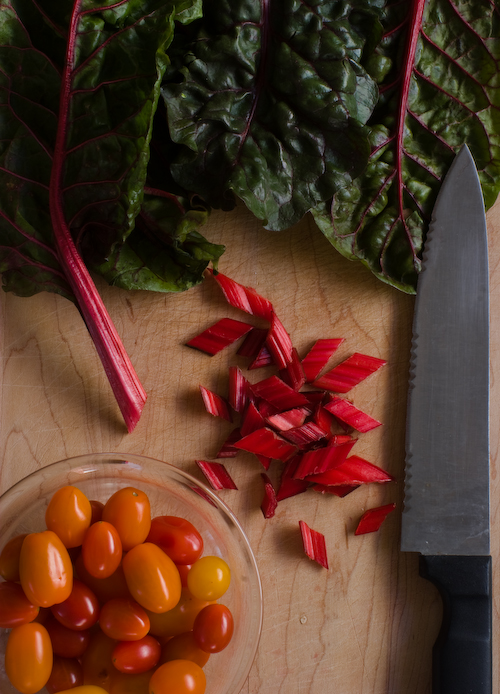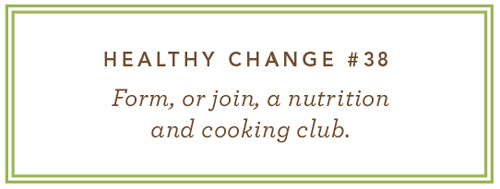
The quick answer: After a steady decline in cooking skills, the pendulum is poised to swing the other way.
______________________________________________________________________________________________
We were in Sacramento this past weekend, in our usual gathering place—my Mom’s kitchen—eating bacon-lettuce-tomato sandwiches. Mom adds cucumber and red onion, thinly sliced, to complete her sandwich. She likes to cook, and did it for a family that grew to ten children. Even with the help of daughters, that was a lot of cooking. She’s a good cook. A child of the Depression, she practices prudence and thanksgiving.
Some years back she observed with surprise that her friends had all stopped cooking. They had raised their families and as their husbands retired from work, they resigned from cooking. What was the result? They’re all dead but one, who suffers from dementia. Mom never stopped cooking and she’s still alive, in her 90s, doing everything she did before, though a bit slower.
Staying Alive
Why do we cook? We cook to stay alive. That's the first rule of cooking!
If a stranger does your cooking, nutrition gets lost. The focus will inevitably be on cost. If Food Inc. is involved, you can add addictive ingredients (the triage of vegetable oil, salt, and sugar, for example). The great food companies understand the role of addictive ingredients in keeping customers. Think of McDonald’s, Coca-Cola or PepsiCo.
A few years ago I was part of a medical device start-up that developed an improved method of treating brain aneurysms. The success of our venture allowed me to leave the stress of the work-a-day world. What do I do now? Whatever moves me, though there must be a purpose. Because I wasn’t working I felt an obligation to help in the kitchen so I thought I would learn to cook.
There are schools for teaching cooking to us late learners, I discovered. The Culinary Institute of America (fondly known as the CIA and based in a former monastery in Hyde Park, New York), claims to be the worlds best, and had a nearby campus in California’s wine country, at St. Helena. Le Cordon Bleu (the phrase means “blue ribbon”), founded over a century ago in Paris, France, but with branches around the world including San Francisco, also claims to be the best. (We were living in the Bay Area then.)
Unfortunately for this post, before I could enroll I got caught up in writing the memoirs of my father-in-law, a project we finished before his death. That moved me to write a book about the origins of my own family, trying to save in one book the biographies of ancestors who immigrated to America, beginning with the Mayflower. I finished just before my own father’s death. My next book was the history of the LDS Church in the Saddleback Valley where we currently live. In all this I was moved to save the lessons, the wisdom, learned by these people. I didn't see the connection then, but it was a necessary preparation for the next topic: nutrition.
In my quest to understand nutrition I began to buy and study books. This was an intense effort; within a year my nutrition library had passed 100 books. I guess I was influenced by the now-silent voices I had studied because, at a visceral level, I believed food tradition was an important guide to figuring out how to eat and be well today. Public interest in nutrition started in the ‘20s and ‘30s after the discovery of vitamins and (thanks to amazon.com) you can buy used versions of these early books. I also followed the modern research.
Through all this, one question repeated: “Could an ordinary person deduce the healthiest course through the food jungle of our industrial age?” My daughter suggested I start a public conversation with real people by writing a blog and offered her design skills. As most readers know, we started last January, offering one Healthy Change each week. As we begin the last quarter of the year, the fall season, our attention turns from nutrients and diseases to cooking.
Learning to Cook
I’m a curious cook, if not a good one. The beautiful wife follows recipes carefully; I experiment. With her advantage of experience, it’s not likely I’ll ever be as good a cook. When she walks into the kitchen she intuitively sniffs the air and knows whether I’m overcooking something, or have the temperature too high. Sometimes she just sighs. But I do learn from my experimentation, though it’s not always edible.
Traditionally girls learned the domestic skills from mothers, as boys learned a trade from their fathers. Life is more complicated now; mom may work and even if she doesn’t many demands compete for her time. There’s been less focus on teaching cooking. There’s also less need as you can simply heat convenience food (the Kraft blue box foods are a sad example), eat out, or carry home take-out. Most grocery stores now include a deli. For these and other influences, there’s been a historic decline in the cooking skill of the average person. Funny thing, though cooking skills have declined, the number of (dusty) cookbooks in homes has increased.
The times are changing and it promises to be a good thing. Besides a growing interest in nutrition over the last decade, there’s a new interest in cooking skills. On one level it’s a spectator sport (think of the chefs competing on the TV shows, making exotic 20-ingredient dishes), but practical cooking is getting more attention too. The magazine Real Simple (life made easier) has a Take Back Dinnertime challenge where they visit struggling moms and teach basic cooking skills that fit the need. Here are examples from the October issue:
- A new wife is taught the basic kitchen tools, given a primer on seasonings, and shown how bone-in chicken can be roasted with vegetables for an affordable and nutritious meal.
- A no-time-to-cook mom is taught to freeze meals in advance, shown dishes made with meatballs, and encouraged to put her children to work helping.
- A mother of young children with a tiny kitchen learns how to organize her kitchen, dress up frozen vegetables, and appeal to her picky eaters.
- A mom with teens who wants to kick the take-out habit learns how to make a weekly menu and shopping list. She also gets tips on using a slow cooker to get a head start on meals.
I applaud Real Simple for this series. By the way, in the October Martha Stewart Living there’s an excellent article on diet and bone health. As you likely know, New York magazines, though sold nationally, tend to address the problems of New York people. Still, though the menus and recipes are sometimes more fancy than practical, you can occasionally find good things.
The popularity of book clubs among young, hip women of all ages is most interesting. What if these clubs left fiction and focused on nutrition and cooking? This would redefine the term “health club” from a subscription gym to a free forum on how to be well. Each meeting could focus on a cooking skill, and a sample dish could be served, with dessert of course. What do you think?
Healthy Change
This week we focus on how to improve cooking skills in the home. As our culture influences the world, perhaps we can one day atone for exporting our fast food by fomenting healthy cooking. There has been a steady decline in our gross national cooking knowledge in recent generations. It’s time for the pendulum to swing the other way.

Please comment on what you are doing to advance home cooking, or tell of someone who helped you. Or share your idea on how to spread the word.
Need a reminder? Download our Healthy Change reminder card. Print and fold, then place in your kitchen or on your bathroom mirror to help you remember the Healthy Change of the week.